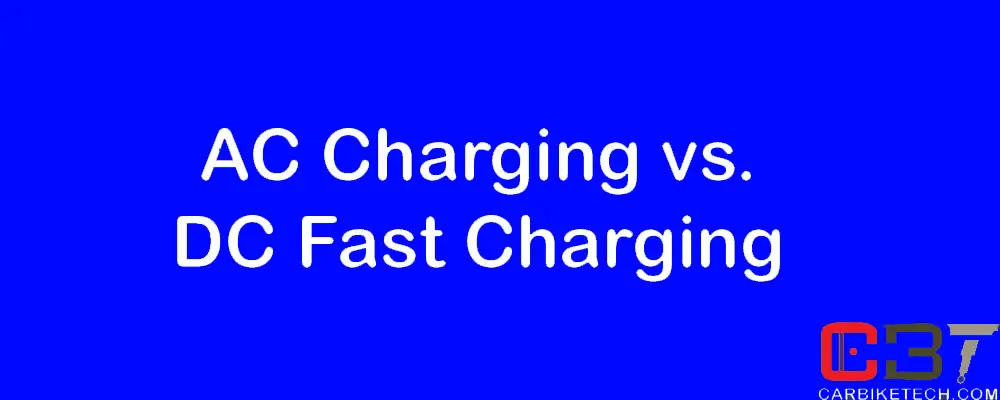Methods Of Charging An EV:
As you can see, it has been mostly the same old process to refuel cars with conventional fossil-based fuels. It has been the same for almost several decades or so. However, you can not say that it is the same in the case of EVs or electric vehicles. This is because it requires diverse degrees of electric power and various types of charges that use advanced technologies. It includes mainly the processes such as AC Charging and DC Fast Charging.
Here, the term AC stands for an alternate current & DC stands for direct current. Do you want to know the dos and don’ts while using an electric charger? What is to be done & what is to be completely avoided? Then, we bring you a detailed analysis of this article’s strengths, weaknesses, and threats.
Let’s Understand These Technologies And Main Differences:
AC Charging vs. DC Fast Charging:
AC charging is the simplest type of charging. A Level 2 AC charger is available in most homes, offices, shopping malls, parks, etc. This charger provides AC or alternate current to the vehicle’s onboard charger. It converts the AC current to direct current (DC) and supplies it to the battery. Thus, you can plug these chargers into regular outlets.
However, you can plug a level 1 charging into a 120-volt household outlet. And, it would take about 8-12 hours to completely charge an average EV battery of about 250km range. Level 2 chargers need a 208-240V electric power supply. Usually, they come in the form of wall-mounted box chargers fitted at homes or charging stations. Besides, a Level 2 charger takes only about 3-8 hours to charge an average EV battery completely. Most EV users prefer Level 2 chargers to mount at home. It is because they can use a domestic power supply and charge the vehicle up to 10 times faster than by Level 1 charging.
DC Fast Charging:
Furthermore, a DC Fast Charging or Level 3 charging avoids all the onboard charger drawbacks that require conversion. Instead, it provides DC power directly to the battery. Thus, it increases the charging speed and reduces charging time significantly. Of course, charging times depend on the battery size and the provider’s output. However, many EVs can charge up to 80 percent within or under an hour using DC Fast Chargers presently available in the market.
Moreover, some older EVs had constraints that allowed them to charge only at 50kW on DC units. However, modern EVs don’t have that constraint anymore. Some EVs even accept up to 270kW power. Besides, manufacturers have increased the size of batteries significantly since the earliest EVs. As a result, DC chargers have been producing increasingly higher outputs to match, with some now producing almost 350kW. However, most EVs currently in the market charge at a maximum of 50kW. However, there are modern EVs capable of charging at over 200kW, involving some Tesla models and the Porsche Taycan.
DC Fast Charging: Disadvantages
Furthermore, DC Fast Chargers are very expensive, putting them out of reach for the general public. Also, they require massive amounts of power that a household circuit can’t support. That is why you can find these charges fitted only at public charging stations. Besides, charging your EV with a DC Fast Charger can cost 3-4 times more than charging at home.
Availability:
The most commonly used DC Fast Charging solutions are Tesla’s level 3 charger called Superchargers and the Combined Charging System. Besides, there is the CHAdeMO plug, which is a DC charging standard for electric vehicles. Combined Charging System/CHAdeMO chargers are accessible at public charging stations in many metro cities.
